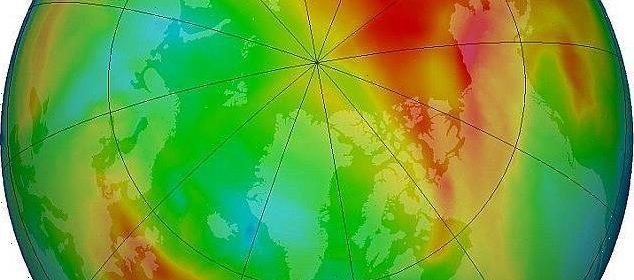Ozone layer will be completely RESTORED in just 40 years thanks to global bans on destructive chemicals, UN study reveals

EARTH’s protective ozone layer is finally healing from damage caused by aerosol sprays and coolants, the United Nations has confirmed.
The ominous opening was first spotted in the 1950s and its alarming growth then sparked global panic during the 1980s.
Scientist raised the alarm and ozone-depleting chemicals were phased out worldwide.
Now the upper ozone layer above the Northern Hemisphere should be completely repaired bythe 2030s.
And the gaping Antarctic ozone hole should disappear in the 2060s.
The Southern Hemisphere lags a bit but its ozone layer should be healed shortly after.
Paul Newman, chief earth scientist at NASA's Goddard Space Flight Centre: "It's really good news.
"If ozone-depleting substances had continued to increase, we would have seen huge effects. “We stopped that."
High in the atmosphere, ozone shields Earth from ultraviolet rays that cause skin cancer, crop damage and other problems.
Use of man-made chemicals called chlorofluorocarbons (CFCs), which release chlorine and bromine, began eating away at the ozone.
In 1987, countries around the world agreed in the Montreal Protocol to phase out CFCs and businesses came up with replacements for spray cans and other uses.
This year, the ozone hole over the South Pole peaked at nearly 9.6 million square miles which is about 16 percent smaller than the biggest hole recorded 11.4 million square miles in 2006.
If nothing had been done to stop the thinning, the world would have destroyed two-thirds of its ozone layer by 2065.
MOST READ IN NEWS
MAJOR SHOCK New evidence about chief Maddie suspect leaves investigators 'shocked'
Five times Andrew ‘was seen sweating’ as rape accuser demands proof he can’t
OnlyFans model begging fans for cash after impact of New Year's resolutions
Boris vows to send British troops to defend Ukraine if Russia dares invade
But it's not a complete success yet, said University of Colorado's Brian Toon, who wasn't part of the report.
He said: "We are only at a point where recovery may have started."
Another problem is that new technology has found an increase in emissions of a banned CFC out of East Asia, the report noted.
And the replacements now being used to cool cars and refrigerators need to be replaced themselves with chemicals that don't worsen global warming, he said.
An amendment to the Montreal Protocol that goes into effect next year would cut use of some of those gases.
"I don't think we can do a victory lap until 2060," Newman said. "That will be for our grandchildren to do."
Source: Read Full Article






